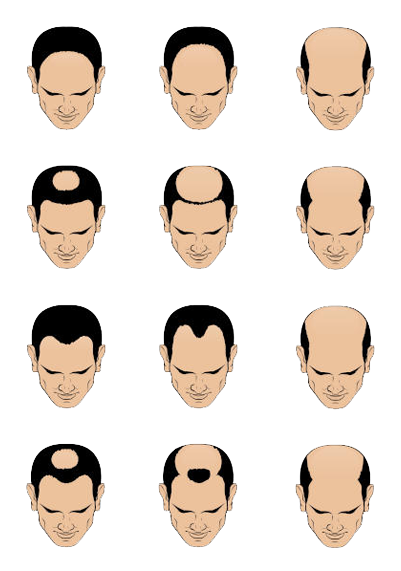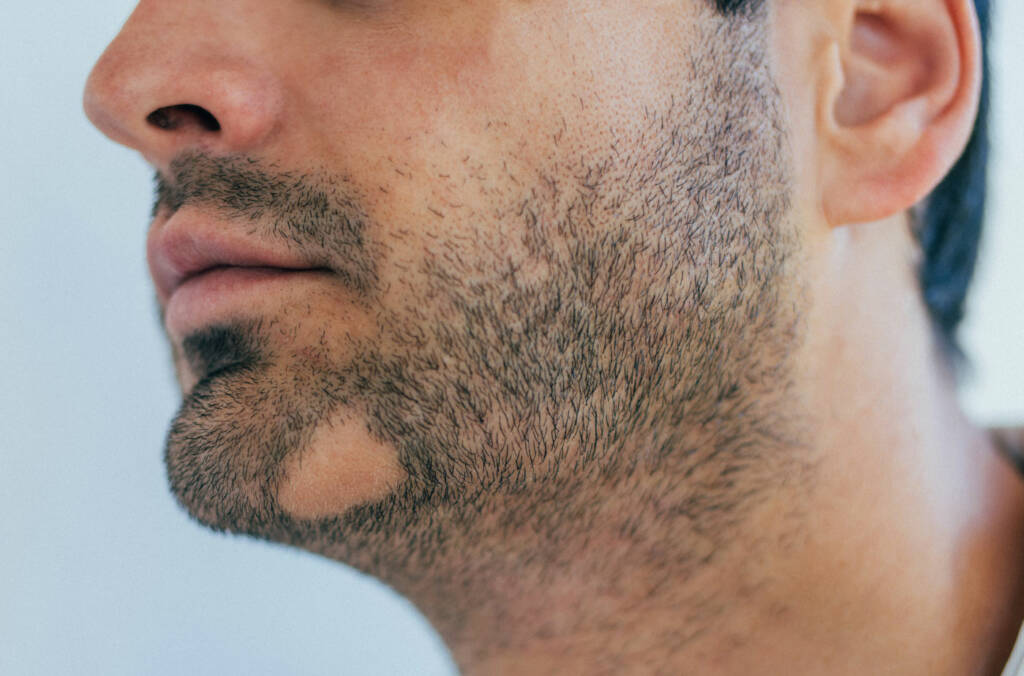How does hair loss occur?
Hair loss has various causes, with the most common being hereditary hair loss (androgenetic alopecia) in both men and women. This occurs due to hair follicles’ genetic sensitivity to the hormone DHT, shortening the hair growth cycle. Other causes include (hair) diseases, hormone imbalances, stress, and medication.

Is it Hereditary hair loss?
A typical hair growth cycle lasts between two and five years, consisting of three phases. First, the hair actively grows, followed by a resting period, after which it eventually sheds. Excessive hair loss occurs when this cycle is disrupted. In cases of hereditary hair loss, a hormone called DHT (dihydrotestosterone) is the main disruptor. Approximately 80% of men experiencing hair loss are affected by this genetic condition.
Hair miniaturisation
In hereditary hair loss, individual hairs gradually become thinner. DHT binds to receptors in hair follicles, causing them to shrink and shortening the hair’s growth phase. While the follicles remain, they produce progressively finer and shorter hairs, a process known as hair miniaturisation. This leads to androgenetic alopecia, which develops gradually as each hair cycle ends with thinner hair. Eventually, the affected hair falls out permanently and does not grow back.

A recognisable pattern
In hereditary baldness, hair on the sides and back of the head, known as the ‘Hippocratic wreath,’ remains unaffected by DHT. However, hair above this area is sensitive to DHT, leading to a typical pattern in men: receding hairline, thinning at the temples, and hair loss from the crown.
The impact of hair loss
Being or becoming bald can be very drastic. In this video, doctor Coen Gho describes the impact of hair loss in men and women.
Patterns of baldness
Although hereditary baldness, also known as ‘male pattern baldness’, affects both men and women, it manifests differently. In men, it typically appears as hair thinning on the crown or around the temples, sometimes starting as early as puberty. In women, androgenetic alopecia generally begins with diffuse thinning, often starting at the hairline.
Genetic cause
Androgenetic alopecia is not technically a disease or disorder, but rather a natural part of ageing, largely driven by genetics. Variations in DNA, particularly in the androgen receptor, have been linked to this condition, though not all the responsible genes have been identified.
Those affected, especially younger individuals, often find baldness distressing. For example, baldness in young women can be highly visible, and men who experience early hair loss may find it equally stressful. Baldness can significantly impact quality of life.


Step #1: a medical diagnosis
Hereditary baldness is typically straightforward for a professional to diagnose due to its distinct pattern. If the hair loss does not follow this pattern, it could be due to various other factors such as hair disorders, hormonal imbalances, cosmetics, or other external influences. Therefore, a thorough medical examination and accurate diagnosis are crucial as the first step in any treatment programme.
Hair disease - Alopecia Areata
Another common hair problem is alopecia areata, also known as patchy baldness. This autoimmune condition typically begins with bald patches on the scalp, which can potentially spread to other areas of the body. While men may commonly experience bald patches in their beard, the condition can also lead to complete baldness. Alopecia areata often appears suddenly, with stress frequently playing a contributing role.


Get the best information
For many types of baldness, a hair transplant can provide a lasting solution. Among the various methods, the HST technique delivers the most natural-looking results. A professional diagnosis is the first step in considering treatment options.
During a free consultation, our doctors will discuss your specific situation and preferences. We will then provide personalised advice and a clear, detailed quote based on this assessment.

